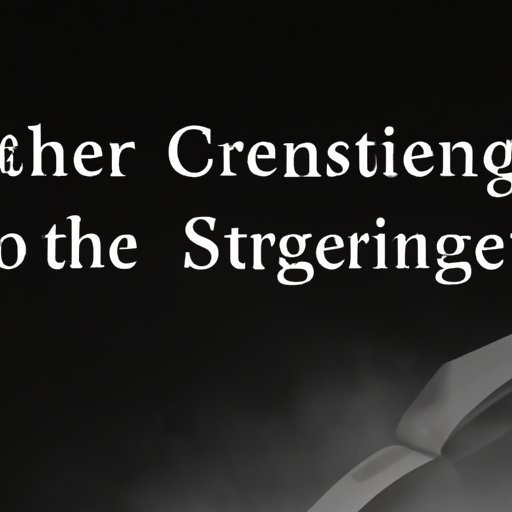Introduction
Tension in writing is an important element that helps to draw readers into a story and keep them engaged. It’s the feeling of anticipation and excitement that comes from wondering what will happen next. It can be used to build suspense, create drama, and even add humor to a story. In this article, we’ll explore some tips and examples of how to create tension in writing.

Use Cliffhangers and Suspenseful Plot Points
A cliffhanger is a type of writing device used to leave readers in suspense at the end of a chapter or scene. It can be used to create tension by leaving unanswered questions or introducing a surprise element. For example, you might end a chapter with a character discovering something shocking or having to make an important decision.
A suspenseful plot point is another way to create tension in writing. This is when a story has an event or revelation that readers don’t expect, usually leading up to a bigger reveal or climax. For example, a story might introduce a previously unknown character who then reveals a major plot twist.

Employ Foreshadowing to Hint at Upcoming Events
Foreshadowing is a technique used to hint at events that will happen later in the story. It can be used to create tension by giving readers a sense of what’s coming but not revealing too much. For example, you might have a character mention an upcoming event or situation that they’re dreading or anticipating. This will give readers a sense of dread or anticipation as well.
Introduce Unexpected Twists and Turns
An unexpected twist or turn is an event or revelation that changes the direction of a story. This can be used to create tension by surprising readers and making them wonder what will happen next. For example, a story might have a character make a sudden discovery or have their plans thwarted in an unexpected way.

Utilize Dramatic Dialogue Between Characters
Dramatic dialogue is a great way to create tension in writing. It involves characters speaking in a way that reflects their emotions, motivations, and thoughts. This can be used to create tension by showing characters in conflict or having heated exchanges. For example, two characters might argue about an important decision or one character might make an ultimatum to another.
Create a Sense of Urgency with Action-Packed Scenes
Action-packed scenes are a great way to create tension in writing. These are scenes where the stakes are high and there’s a sense of urgency. This can be used to create tension by putting characters in danger or having them race against the clock to achieve a goal. For example, a character might have to fight off an attacker or try to stop a bomb from going off before it’s too late.
Conclusion
Creating tension in writing is an important part of crafting an engaging story. By using cliffhangers, suspenseful plot points, foreshadowing, unexpected twists and turns, dramatic dialogue, and action-packed scenes, you can create tension and keep readers on the edge of their seats. Now that you know some of the techniques for creating tension, you can start applying them to your own writing.
(Note: Is this article not meeting your expectations? Do you have knowledge or insights to share? Unlock new opportunities and expand your reach by joining our authors team. Click Registration to join us and share your expertise with our readers.)
